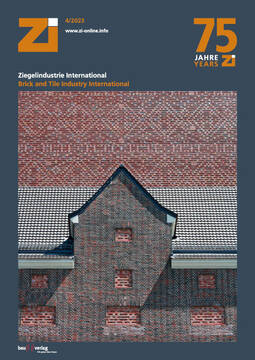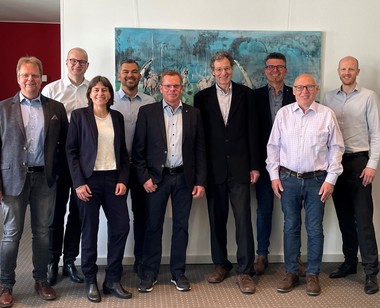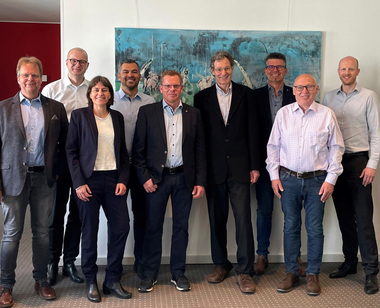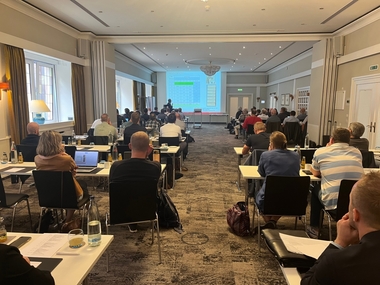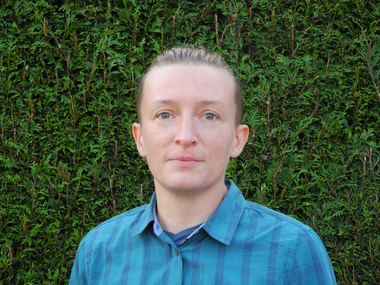On the end of cheap natural gas and CO2-free process heat
On 9 May 2023, the Advisory Board of the Research Association of the German Brick and Tile Industry met at the Eurostars Hotel in Berlin-Mitte for its regular spring meeting. The focus of the lecture programme was on gas and CO2-free variants for generating process heat for the brick and tile industry. In addition, current research projects were presented and discussed.
In his lecture, Dr. Ludwig Möhring, Managing Director of the Federal Association for Natural Gas, Oil and Geoenergy, outlined how the gas market has moved from a supply crisis to a price crisis. The loss of Russian natural gas supplies has removed the condition for the German climate protection strategy, cheap natural gas, he said. He explained in detail why there can be no structural cheap natural gas as a substitute. The brick and tile industry will have to prepare for higher price standards.
Eckhard Rimpel, deputy director of the Institute for Brick Research Essen e.V. (IZF), spoke about decarbonised process heat in the brick industry. With increasing use of H2 in test firings, he said, the product quality is almost not or only slightly changed. Challenges exist in the technical upgrading of tunnel kilns, availability and transportability. Ammonia could be a solution option and could also be added directly.
Regina Vogt from the Weimar Institute of Applied Construction Research discussed CO2-neutral brick firing with hydrogen in her presentation. In addition to a presentation of the state of the art for hydrogen as a firing gas, the focus was on the influence of the kiln atmosphere on the product properties. On the basis of test results it was shown that the water vapour content in the kiln atmosphere has an influence on the ceramic properties. This influence in turn depends on temperature and clay composition.
Jochen Schürer, Fraunhofer Institute for Microtechnology and Microsystems IMM, presented the project ‘Green Cracked Gas as a Firing Gas for Brick Production’, which is being carried out as part of the joint project Klimpro. A reactor is being developed in which ammonia is split into nitrogen and hydrogen and the gas mixture is to be used for brick firing. The presentation included results from simulations and tests with fission reactors and burners. The use of green ammonia has potential. Further research steps will concern the optimisation of the burners and upscaling.
Dr. rer. nat. Eveline Zschippang, Group Leader Nitride Ceramics and Fibre Composites at the Fraunhofer Institute for Ceramic Technologies and Systems IKTS, discussed the project ‘HoTempLa: High temperature bearing - New transport system based on high temperature bearings for efficient firing of bricks’. The presentation focused on the results after installation and the first hot air test. The aim is to increase energy efficiency by reducing exit losses and losses via tunnel kiln cars.
Dr. Ralf Wagner from the Materials Research and Testing Institute at the Bauhaus University Weimar (MFPA) presented the research project ‘Influence of functional surfaces on the urban microclimate and on building energy demand’. The aims of the project are to adapt the radiation-physical properties of coarse ceramic building component surfaces, reduce the ‘heat island effect’ and reduce the building energy demand (less cooling). The biggest influence on air temperature is the radiation properties of the building material.
Akash Nagarj from IZF discussed the building physics optimisation of brick structures. A fundamental challenge is that sound and thermal insulation are in constant interaction with each other. Various modelling approaches were presented that can be used to analyse heat and sound transport: Finite Element Modelling and Parameter Study. The further procedure consists of systematic parameter studies and the development of a digital tool by correlating different parameters.
Dr Jurij Walz from MFPA presented the research project ‘Automated image analysis for brick and masonry sorting using machine learning techniques’. The approach is to couple information from the NIR and VIS spectrum with information from the high resolution image. With the CNN ResNet50 programme, recognition rates of over 95 percent are possible.
In the last lecture, Dr Jan Rybizki from the IAB discussed the application potential of simulation and AI in the brick industry. He presented experiments on 3D simulation of flow and heat transfer in kilns and of brick moulds, as well as the use of AI in quality control. The conclusion of the experimental results is that numerical methods are a suitable tool for increasing process understanding, supporting design, questions of optimisation and quality assurance.

